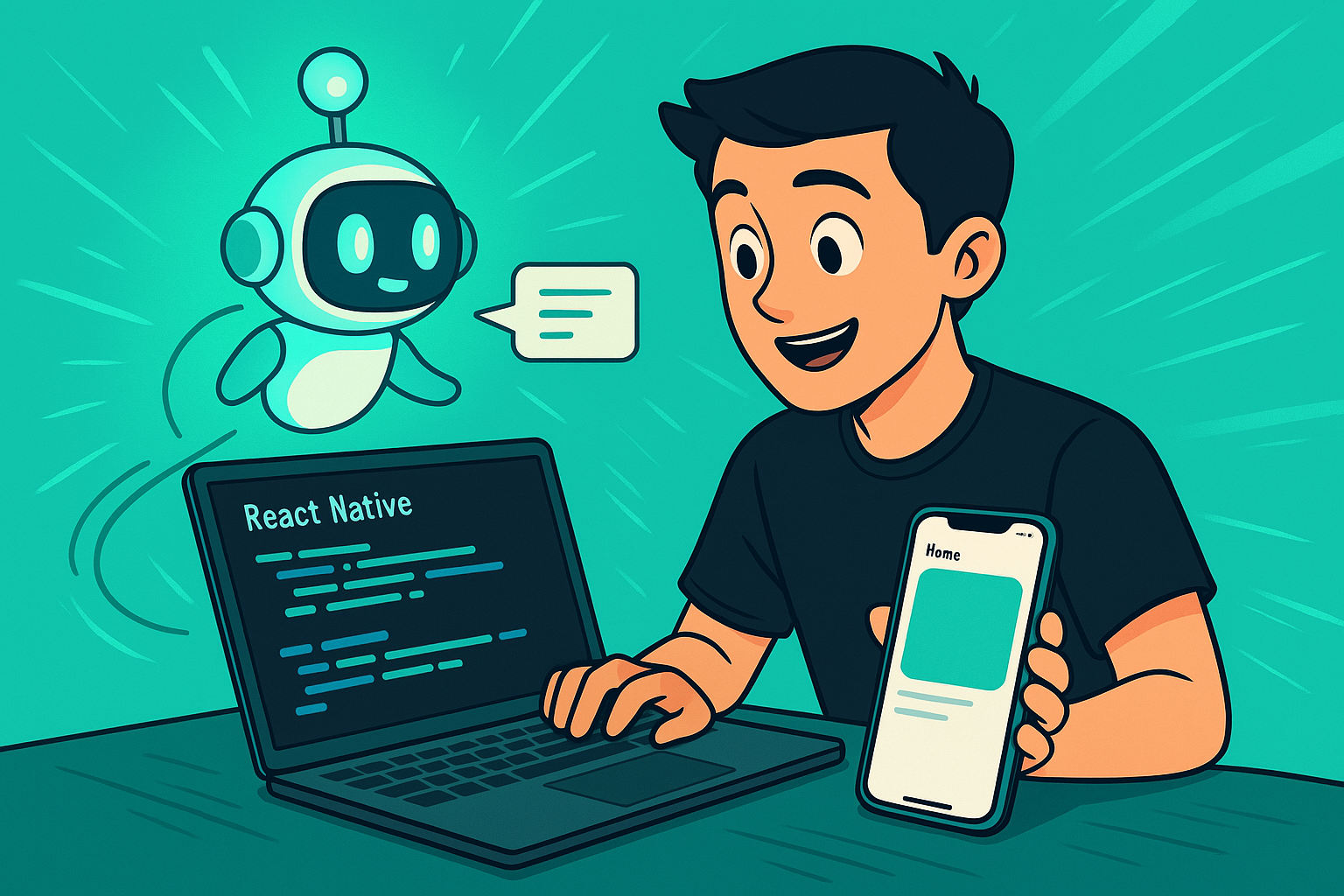How Vibe Coding Changes Your Coding Experience
- 08 Apr, 2025

A few months ago, I found myself sitting in front of my laptop, tired and staring at a blank code editor. I had this idea for a mobile app—but there was one tiny problem: I had zero experience with mobile development.
Still, I’d always wanted to build something in mobile ecosystem. And now thanks to AI, I finally had a way in.
I fired up Cursor, typed in:
“Build a basic React Native app with a home screen and bottom navigation.”
Boom. Code. Working code. 🤯
What started as a quick test turned into a crash course in mobile development. With vibe coding, I wasn’t just coding—I was learning by building. Every prompt taught me something new. Navigation, theming, animations—I went from clueless to confident, one prompt at a time.🤓
No more jumping between Stack Overflow tabs and 10-year-old blog posts. I just told the AI what I wanted, tweaked the results, and kept moving.
And just like that, I was building my first mobile app—something I’ve always wanted to do. AI didn’t just speed things up. It opened the door. So…
What Is Vibe Coding?
If you’re thinking candles and lo-fi music, nope—not that kind of vibe coding. (Though those are great too.)
Vibe coding, a term popularized by Andrej Karpathy, is the practice of instructing AI agents to write code based on natural language prompts. You tell the AI what you want the feature to feel like, how it should behave, and what the end result is. The AI writes the code. You guide it, tweak it, and move on.
Karpathy described it perfectly:
“There’s a new kind of coding I call ‘vibe coding’, where you fully give in to the vibes, embrace exponentials, and forget that the code even exists.”

Now, I’m not saying you’ll forget about code completely. But vibe coding does something wild—it gets the technical stuff out of your way, so you can focus on building.
It’s Not Lazy. It’s Smart. Some people hear “natural language coding” and immediately assume it’s just a shortcut for lazy devs.
That’s like saying a calculator is cheating at math. 😂
I still debug. I still write logic. But I’m spending way more time deciding what to build, and far less time typing out boilerplate or setting up routes for the 100th time.
I’m not skipping work. I’m skipping the parts that make me want to nap under my desk.
My Day-to-Day with Vibe Coding
Here’s a real example from my day building Quotesmatic (an AI quotes app I’ve been shipping for iOS):
I wanted a “Create Quote” screen with mood-based tone options. Prompt: “Create a screen with 30 tone options in pill buttons. When one is selected, show a text field for the user to add a quote.” Got a full React Native component back. Tweaked the layout a bit. Done. 🤓
I needed backend APIs for saving quotes. Prompt: “Python-flask API to save quotes with user deviceID and timestamp. Store in MongoDB.” AI handed me the whole route + model schema. I just added authentication later.
Animations felt clunky. Prompt: “Add a fade-in and slide-up animation to the quote display screen.” Expo + Reanimated + working code = smooth vibes.
I’d have spent hours Googling half of that. Instead, I spent that time testing, polishing, and—this is important—actually enjoying the process.
So What’s the Catch?
Of course, vibe coding isn’t magic. You still need to know what you’re doing. If you don’t know what a hook is, the AI can’t hold your hand through React state management. You have to be the brain—it’s just the super fast hands.
Also, the AI sometimes hallucinates. One time it confidently gave me a working function that didn’t exist in any library I’ve ever heard of. I still thanked it. Then I rewrote the whole thing.
Why I’m Never Going Back
Vibe coding has changed how I ship things. I’m faster. I’m more focused. And I actually finish projects now instead of rage-quitting halfway through a messy backend setup.
I used to burn out trying to get everything right on the first try. Now, I write a prompt, see what comes back, and iterate. I move fast. I break things. Then I fix them—with better vibes.
Final Thought
The beauty of vibe coding is that it lowers the mental load. You’re not juggling ten things in your head. You’re just telling the AI what you want and guiding it along like a very eager intern who types faster than you ever could.
So next time you’re staring at a blank file, just vibe with it. Open your prompt bar. Type what you want. Let the AI build the boring parts while you stay focused on the fun bits.
Who knows—maybe your next big product starts with a prompt like: “Build me a quote-sharing app with theme selection, smooth animations, and a little sass.”
Worked for me.

![Vibe coding iOS App [Day 43]](/images/posts/post36/preview.png)
